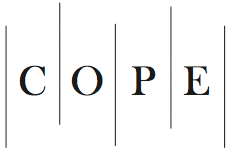Microbes
Microbes is multidisciplinary international, open access, peer reviewed scientific journal committed to publish original research, critical reviews, and short communications, reporting theoretical, experimental, applied, and descriptive work in all aspects of microbial science.
Managing Editor: Dr. Sajjad Hyder
Country of Publication: Pakistan
Format: Print & Online
Frequency: 03
Publication Dates: April, August, December
Language: English
Author Fees: Yes
Types of Journal: Academic/Scholarly Journal
Access: Open Access
Indexed & Abstracted: Yes
Policy: Double blind peer-reviewed
Review Time: 04-06 weeks approximately
Contact & Submission e-mail: microbes@esciencepress.net
Alternate e-mail: info@esciencepress.net

Journal Scope
The journal aims to serve the research community by providing a platform for researchers to publish quality research in both fundamental and applied microbiology. The journal considers submissions on microbes infecting or interacting with microbes, plants, animals, and humans covering the following aspects:
Agricultural microbiology
Beneficial microbes
computational, systems, & synthetic microbiology
Environmental microbiology
Food microbiology
Industrial microbiology
Medical & pharmaceutical microbiology
Microbial physiology & ecology
Microbial biochemistry
Microbial genetics & genomics
Microbial biotechnology
veterinary microbiology
 Microbes follow guidelines by Committee on Publication Ethics (COPE). Microbes takes the responsibility to enforce a rigorous peer-review together with strict ethical policies and standards to ensure to add high quality scientific works to the field of scholarly publication. Unfortunately, cases of plagiarism, data falsification, inappropriate authorship credit, and the like, do arise. Microbes takes such publishing ethics issues very seriously and our editors are trained to proceed in such cases with a zero tolerance policy. To verify the originality of content submitted to our journals, we use iThenticate to check submissions against previous publications. Microbes works with PUBLONS to provide reviewers with credit for their work.
Microbes follow guidelines by Committee on Publication Ethics (COPE). Microbes takes the responsibility to enforce a rigorous peer-review together with strict ethical policies and standards to ensure to add high quality scientific works to the field of scholarly publication. Unfortunately, cases of plagiarism, data falsification, inappropriate authorship credit, and the like, do arise. Microbes takes such publishing ethics issues very seriously and our editors are trained to proceed in such cases with a zero tolerance policy. To verify the originality of content submitted to our journals, we use iThenticate to check submissions against previous publications. Microbes works with PUBLONS to provide reviewers with credit for their work.
Latest News on Microbes
Bacterial 'jumping genes' can target and control chromosome ends | |
| Transposons, or 'jumping genes' -- DNA segments that can move from one part of the genome to another -- are key to bacterial evolution and the development of antibiotic resistance. Researchers have discovered a new mechanism these genes use to survive and propagate in bacteria with linear DNA, with applications in biotechnology and drug development. | |
| Posted: 2025-03-06 | More... |
Early-life gut microbes may protect against diabetes, research in mice suggests | |
| The microbiome shapes development of insulin-producing cells in infancy, leading to long-term changes in metabolism and diabetes risk, new research in mice has found. The results could ultimately help doctors reduce the risk of type 1 diabetes -- or potentially even restore lost metabolic function in adulthood -- by providing specific gut microbes that help the pancreas grow and heal. | |
| Posted: 2025-03-06 | More... |
The chances of anything coming from Mars | |
| Within the next decade, space agencies plan to bring samples of rock from Mars to Earth for study. Of concern is the possibility these samples contain life, which could have unforeseen consequences. Therefore, researchers in this field strive to create methods to detect life. Researchers have now successfully demonstrated a method to detect life in ancient rocks analogous to those found on Mars. | |
| Posted: 2025-03-06 | More... |
Throat microbiome holds clues to older Australians' health | |
| New research has uncovered a potential marker that could provide valuable insights into the overall health of older adults living in long-term aged care facilities. The study found that a simple swab from the back of the throat, known as the oropharynx, may offer clues about health challenges faced by aged care residents. | |
| Posted: 2025-03-06 | More... |
New STI impacts 1 in 3 women: Landmark study reveals men are the missing link | |
| A landmark study reveals that bacterial vaginosis (BV), a condition affecting nearly a third of women worldwide and causing infertility, premature births and newborn deaths, is in fact an STI, paving the way for a revolution in how it is treated. | |
| Posted: 2025-03-05 | More... |


